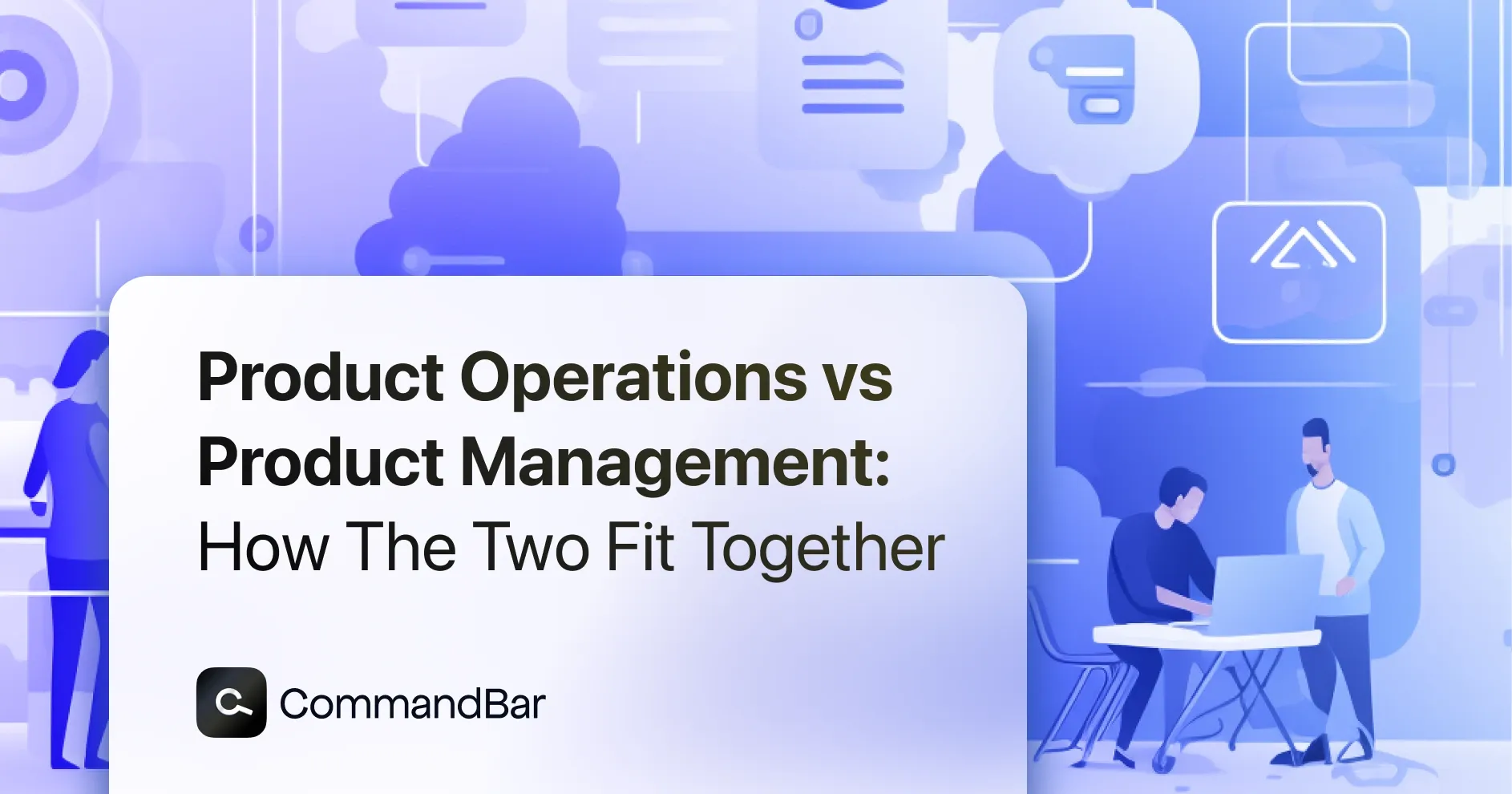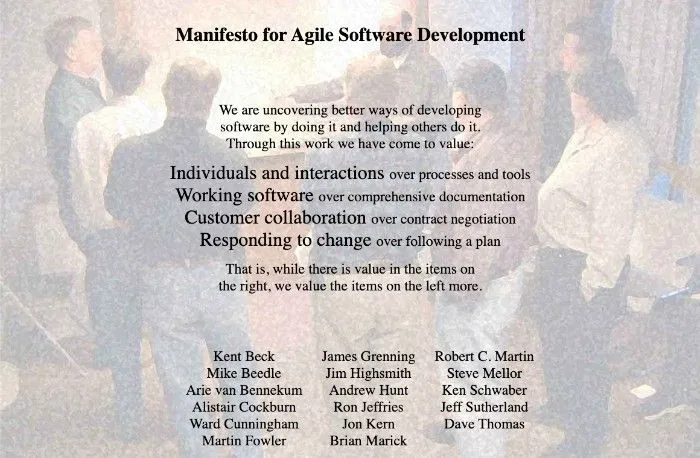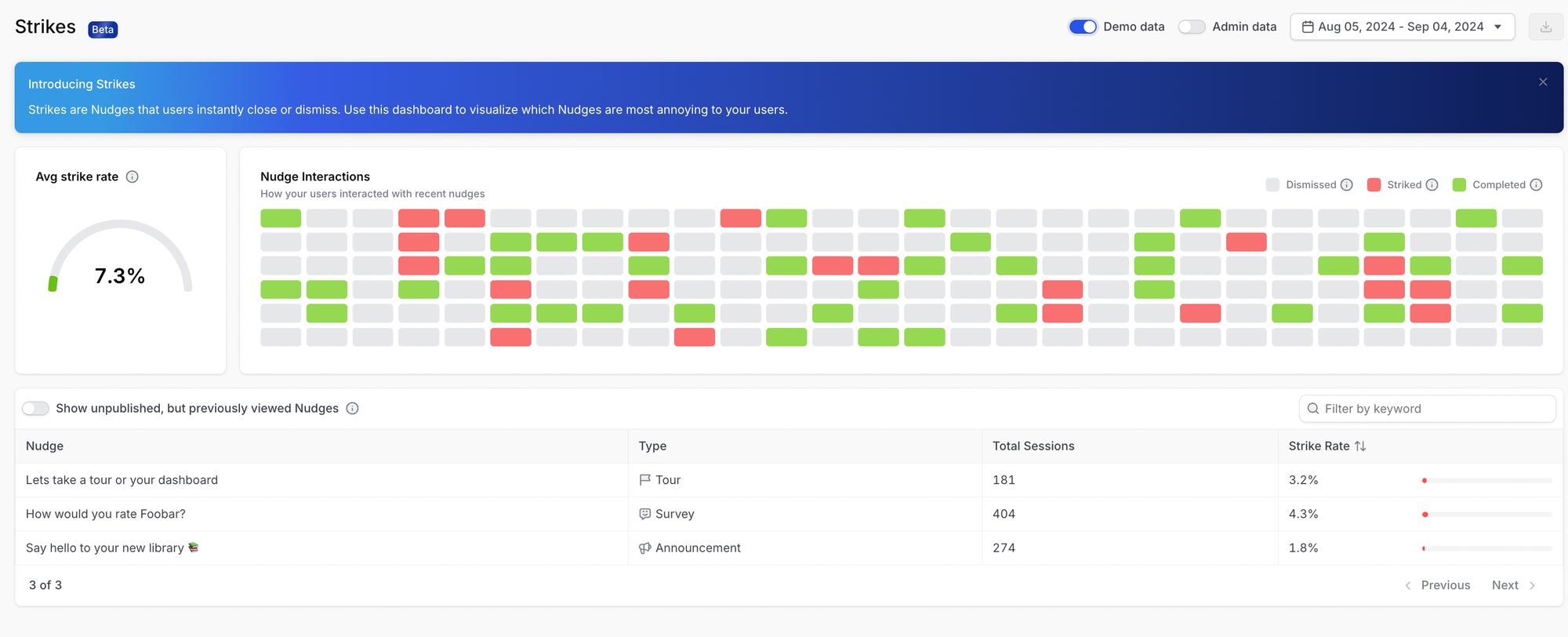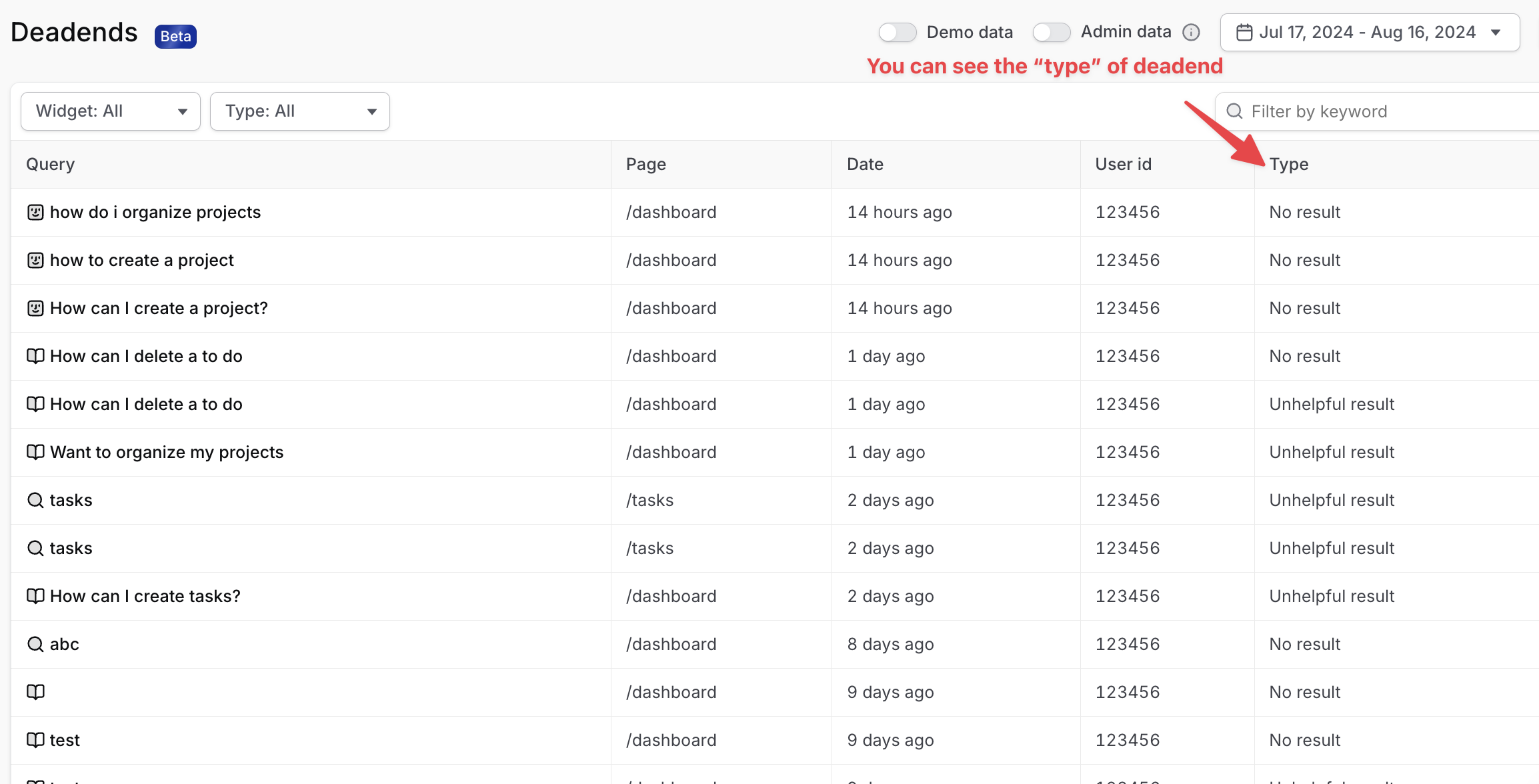Product operations vs Product management: How the two fit together
Explore the roles of Product Managers and Product Operations Managers, their collaboration for effective product delivery, and provides hiring guidance.

People love to hate product management. If you ask the most disgruntled engineer, they'll tell you it's a useless profession that only creates more work and meetings for everyone.
Now imagine telling that person that we could add another layer to the product organization—that's product operations.
While our hypothetical engineer starts to write his registration letter, the rest of us have the benefit of being more open-minded—and knowing that product is a great function to have.
But even the biggest product management enthusiast probably has a hard time defining product operations for good. That's exactly what we'll explore in this article: What product operations is and how it's different from product management.
Ready to impress your coworkers in the next meeting? Read on!
For most, it's pretty obvious what Product Managers (PMs) do and why they are so important. It's often less clear what Product Operations (Product Ops) or a Product Operations Manager (POM) is. Once you're clear on that, a suite of new questions emerges:
- Is Product Ops merely a subset of the Product Management organization? Or does it stand as a separate entity with unique functions?
- How do these the PM and POM roles intersect? Where do they diverge?
- How should they work together?
Thinking through these questions is important for understanding how to structure your company and build a better product.
In this article, we'll dissect the definitions, responsibilities, and impacts of both Product Management and Product Operations. We'll compare and contrast their functions, and explore how they can help your business by working in sync.
Table of contents:
- The history of Product Management and Product Operations
- Why do Product Management and Product Operations matter?
- What do Product Managers and Product Operations Managers do?
- Optimizing Product Operations and Product Management
- Should I hire a Product Manager or Product Operations Manager first?
- What can I do to take action?
The history of Product Management and Product Operations
The early days of Product Management
In SaaS companies, Product Management and Product Operations have stepped up as the leading players, each playing a pivotal role in the creation and delivery of products. But the Product Manager role actually did not originate in tech.
The first example of the idea of a Product Manager came from Neil McElroy in a Procter & Gamble memo in 1931 about "brand men" – people focused on Sales and Marketing, with an emphasis on understanding the customer. This idea soon made its way to tech OG's Bill Hewlett and David Packard (the founders of Hewlett-Packard), who adopted a customer-centric approach for product.

Product Management's Evolution in tech
As teams evolved in tech, it became imperative to merge product development with customer needs, pushing product development back into the Product Management fold. This led to an evolution where Sales & Marketing focused on brand and customer acquisition, while Product took charge of the value proposition and product development.
This shift was further catalyzed by the Agile Manifesto. The Agile principles prioritized customer collaboration over rigid deliverables, promoting a dynamic interaction between Product and Engineering.

The modern Product Manager emerged out of the need for a 'mini-CEO' of the product, someone who could champion the product vision, manage its execution, and guide each iteration. Trailblazers in the tech industry, like Microsoft and Apple, brought this role to the forefront. Product Managers at Microsoft, for instance, became the nexus of the development process, orchestrating between design, engineering, and marketing to shape and ship products that captured market interest.
The sudden rise of Product Operations
As tech companies scaled, complexity followed. Simultaneously, data exploded into each part of the business. This dynamic SaaS landscape, coupled with rapid technological advancements, demanded a coherent, refined approach to managing products. Enter Product Operations. Originating from giants like Google and Uber in the 2000s and 2010s, Product Ops quickly became a distinct and vital cog in product delivery. It emerged as the backbone that streamlined processes, aligned cross-functional teams, and provided data-driven insights, all while keeping the product vision in focus.
Why do Product Management and Product Operations matter?
So, why do these disciplines matter? Simply put, Product is responsible for the direction and execution of the product. Product Ops optimize the in's and out's of the company to bring out the best from each team, ultimately enabling better product delivery.
Product Management's importance
A Product team serves as a company's north star. They encapsulate the voice of the customer. They ensure that every sprint, every feature, every release resonates with the user base. They create the trifocal lens through which market trends, user needs, and business goals come into sharp focus. Without a Product team or similar capabilities, a tech company risks becoming rudderless, shipping without rhyme or reason, disconnected from its customers and disoriented in its mission.
Product Operations' importance
Product Ops is the machinery that powers a tech company's product ecosystem.
"Product operations focuses on defining and optimizing processes within your product development lifecycle, owns product analytics and tracks progress towards objectives, and coaches and mentors the product team."
-Brian Arnst, Product Director (ComboCurve)
They bring order to the complexity, streamlining processes, facilitating communication, and leveraging data to inform decisions. In essence, the Product Ops team ensures the entire Engineering Product Design (EPD) organization operates efficiently and effectively. This role directly impacts the speed of product development, the quality of the end product, and ultimately, the satisfaction of the customer. As companies scale, the importance of their Product Operations team intensifies. Without it, product teams can become siloed, decision-making can slow down, and important details can slip through the cracks.
What do Product Managers and Product Operations Managers do?
First let's start with an overview of Product Management vs Product Operations.
- Product Managers are often seen as the visionary, charting the product's strategic course, defining the roadmap, and serving as the customer's advocate within the company. They engage in high-level planning, making decisions about what features to develop.
- POMs own the "behind the scenes" tactical aspects that help bring the product strategy to life. They ensure smooth collaboration across teams, manage tools and processes, and extract insights from data to guide decision-making. While the PM sets the product's direction, the POM ensures efficiency, coordination, and completeness.
Core Responsibilities of a Product Manager
a16z's Ben Horowitz wrote a famous (and slightly outdated) piece about PM's Good Product Manager/Bad Product Manager. Part of the intro still rings true "A good product manager is the CEO of the product. A good product manager takes full responsibility and measures themselves in terms of the success of the product. The are responsible for right product/right time and all that entails." The core responsibilities follow from this:
- Product vision and execution: At the heart of a PM's role is setting the product vision and aligning it with the company's broader strategy. Most importantly, they ensure that the vision is executed and delivered.
- Customer advocacy: PMs are the voice of the customer within the organization. They delve into customer feedback, preferences, and pain points, translating these insights into features that make the product more appealing and useful.
- Roadmap development: They are responsible for developing and maintaining the product roadmap, detailing the plan for future enhancements and iterations.
- Cross-functional leadership: PMs lead and collaborate with cross-functional teams, including Design, Engineering, Marketing, and Sales. They ensure each team is aligned and contributing to the product objectives.
- Performance analysis: PMs track product performance and success metrics. They use these insights to adjust strategies, set priorities, and make data-driven decisions.
For example, PMs might build different surveys, tours, and nudges in Command AI, and then evaluate how different in-app messaging is performing.
For example if they're running lots of surveys and feature announcement nudges, they can use the strikes dashboard in Command AI to see how users are interacting with those messages.

You can see which ones they close out of/strike more often, and tweak copy to better match those that perform well.
Core skills of a Product Manager
A PM needs a wide set of skills to fulfill their responsibilities.
- Leadership: A PM leads without formal authority, influencing and aligning cross-functional teams towards a shared vision. They inspire, motivate, and guide their colleagues.
- Strategic Thinking: They must see the big picture, bridging market trends, an understanding of the competitive landscape, and customer needs. This strategic thinking enables them to steer the product in the right direction.
- Communication: Articulating the product vision, conveying complex ideas, and establishing a clear direction to multiple teams requires excellent communication.
- Analytical ability: PMs constantly interact with data. They analyze data to draw insights, measure product success, and inform decisions.
- Customer empathy: Understanding the customer deeply is a "must" for Product Managers. An empathetic perspective allows them to advocate for and solve customer needs.
One of the best ways to improve your customer empathy is with better insight into their true intent. You can gather this effectively using Command AI's Copilot. Copilot sits in the bottom right of your product, and is trained on all of your help documentation. Users can ask questions and get answers quickly, deflecting tickets and saving your support teams time and energy.
Copilot can even launch in product experiences and co-browse with the user!
Cobrowsing
But you also get access to all of these queries, which you can analyze to find true intent, Trends, more. This is the Trove of natural language data which indicates what your users are frustrated by or asking about, how your health documentation supports it, and generally paints a picture of where your product excels and where it struggles.

These "deadends" as we call them, can be analyzed and incorporated as feedback into the product development cycle.
Core responsibilities of a Product Operations Manager
Product Operations Managers responsibilities are very diverse, and can exact details vary significantly from company to company. With that said, there are a few key pillars.
- Product lifecycle management: POMs help manage and track the product roadmap, from conception to launch and beyond.
- Cross-functional collaboration: They ensure seamless communication across Design, Engineering, Marketing, Sales, and Customer Success teams.
- Data culture: The best POMs empower data-guided decision making across the company by implementing robust product analytics tools & processes and by mining insights from disparate data sets.
- Other (tools and processes): POMs also take charge of tool management. They select, implement, and maintain the product operations software used across the organization, ensuring they are harnessed to their full potential. They are the explorers of technological advancements, continually assessing and implementing new tools to enhance efficiency and effectiveness. They often optimize processes, including meetings, to ensure productive communication and swift decision-making. They set clear agendas, facilitate discussions, follow-up on action items, and assess the overall meeting culture within the team to maintain momentum.
Core skills of a Product Operations Manager
Product Operations Managers are veritable Swiss Army Knife, deploying a diverse set of skills to meet the demands of this multifaceted role.
- Communication: As the conduit between various departments and stakeholders, excellent communication skills are paramount. They not only need to convey their ideas clearly but also establish effective communication norms within the organization.
- Analytical prowess: A POM thrives on data. Strong analytical skills are vital to interpret data, glean insights, and drive informed decision-making.
- Project/program management: The ability to manage projects, keep them on track, and allocate resources efficiently is crucial in this role. A POM is often juggling multiple tasks and projects simultaneously.
- Organization: The role's breadth demands top-tier organizational skills. From managing tools to coordinating teams, a POM needs to keep the pieces moving smoothly and coherently.
- Product sense: Perhaps the most vital skill is a keen understanding of the product, customer, and market. This knowledge enables the POM to steer the product development in a direction that meets customer needs and ensures success in the marketplace.
Optimizing Product Operations and Product Management
Marrying Product Management and Product Operations drives better business outcomes
"I’ve seen that the product ops role varies significantly across companies, just as a PM’s responsibilities differ based on their interactions with engineering and design. More specifically, the structure and positioning of the operations team has a big impact on the product ops function. Often times the org the product ops sits in is very telling of whose goals they spend more time on, product or ops."
-Dima Kovalev, Head of Product (Nana)
While the PM establishes the 'what' and 'why' of the product, the POM determines the 'how'. When working as a unit, the Product team is able to forge a product vision that is data-driven, customer-informed, and built by contributions from the entire company. Equally importantly, they ensure this vision is successfully executed. As a result, there are tangible and significant benefits for the company:
- Higher customer satisfaction and retention
- More revenue
- Better employee engagement
Tips for harmonizing Product Operations and Product Management
- Define clear roles: Make sure that both the PM and POM understand their responsibilities and areas of focus. Clear role definitions prevent confusion and overlap. This does not mean getting overly granular on the details. Product Managers and Product Operations Managers oversee wide domains. Overly prescriptive role confinement can dampen motivation and limit their potential.
- Foster a culture of open communication: Encourage regular check-ins and updates between the PM and POM. POM's should always be aware of what's burning for PM's. PM's should always understand what POM's are focused on so that they can surface relevant pain points, bottlenecks, and technology needs. Open communication ensures alignment on prioritization, strategy, and operations. Beyond PM <-> POM communication, leaders and IC's from Product, Engineering, Design, Sales, Marketing, Customer Success, and Support orgs should feel comfortable engaging the PM and POM. Each team member has something to contribute to both roles, ranging from ideas, to insights, to other unique perspectives.
- Embrace their differences: The PM and POM each bring distinct skills to the table. The PM's strategic thinking complements the POM's operational expertise. Recognize these differences and allow each role to shine in its area of expertise.
- Create shared goals: The PM and POM should establish shared goals and metrics. This encourages collaboration and ensures that both roles are working towards a common objective.
Should I hire a Product Manager or Product Operations Manager first?
The context-blind answer is to hire a PM first. Most teams don't have a dedicated Product Operations Manager until their Series B.
In the early days of a startup, resource allocation needs to be smart and strategic. A PM plays a crucial role in setting the product's strategic direction, advocating for the customer, developing the roadmap, and working directly with cross-functional teams to bring the product to life.
So what happens to all the responsibilities that are owned by a Product Ops team?
In the beginning, some combination of employees (e.g., founders, CPO, CTO, PM, Lead Designer) can split some of the responsibilities typically shouldered by a POM. This includes managing tools, optimizing processes, and performing product analytics. This multi-hat approach can be effective until the company scales to a point where the complexity and volume of operations demand a dedicated POM.
How do I know when I'm ready to hire a Product Operations Manager?
Before deciding to hire a POM, founders should consider the following fundamental questions:
- Is the product roadmap becoming complex to manage? If the team is finding it increasingly difficult to keep track of the product roadmap (e.g., due to an increasing number of features, improvements, or products), it is likely worth bringing a POM on board.
- Are cross-functional collaborations falling short? If your PM's time is strictly focused on roadmap development and execution, it is possible that team-to-team communication is suffering. A POM can help streamline communication and processes across teams.
- Are we struggling to make data-informed product decisions? As your product and user base grows, so does the amount of data. A POM helps implement robust analytics tools, manage data, and draw insights that guide decision-making.
What can I do to take action?
Are you ready to optimize your product lifecycle, streamline operations, and build better products? Here's your action plan.
- Re-evaluate roles: If you already have a Product Manager or a Product Operations Manager, take the time to revisit their responsibilities. Ensure their roles align with your company's needs.
- Consider Your Needs: If you're operating without a PM or POM, it's worth reflecting on the current state of your company. Could your product's vision benefit from a dedicated PM? Could your operations be smoother with a POM at the helm? These roles could be the game-changers you need.
- Harmonize and Maximize: If you're fortunate to have both a PM and POM, encourage synergy. Define clear operating lanes, foster open communication, align them on shared goals, and allow each role to leverage its strengths. When Product and Product Ops collaborate seamlessly, the result is a superior product that resonates with customers.
We'd love to hear your experiences, success stories, and any other thoughts related to Product Management and Product Operations. How have these roles shaped your product's journey? What unique strategies have you adopted?
If you're interested in learning more, check out the Happy Paths podcast to hear from the product leaders and builders of some of the world's most influential tools (like Gmail and Slack).

